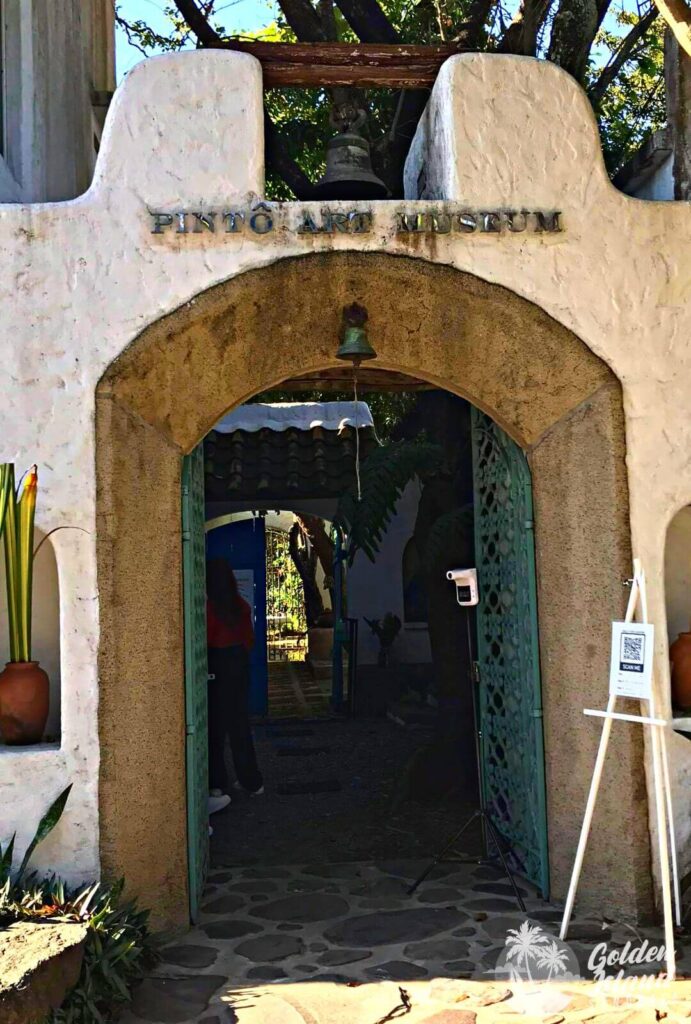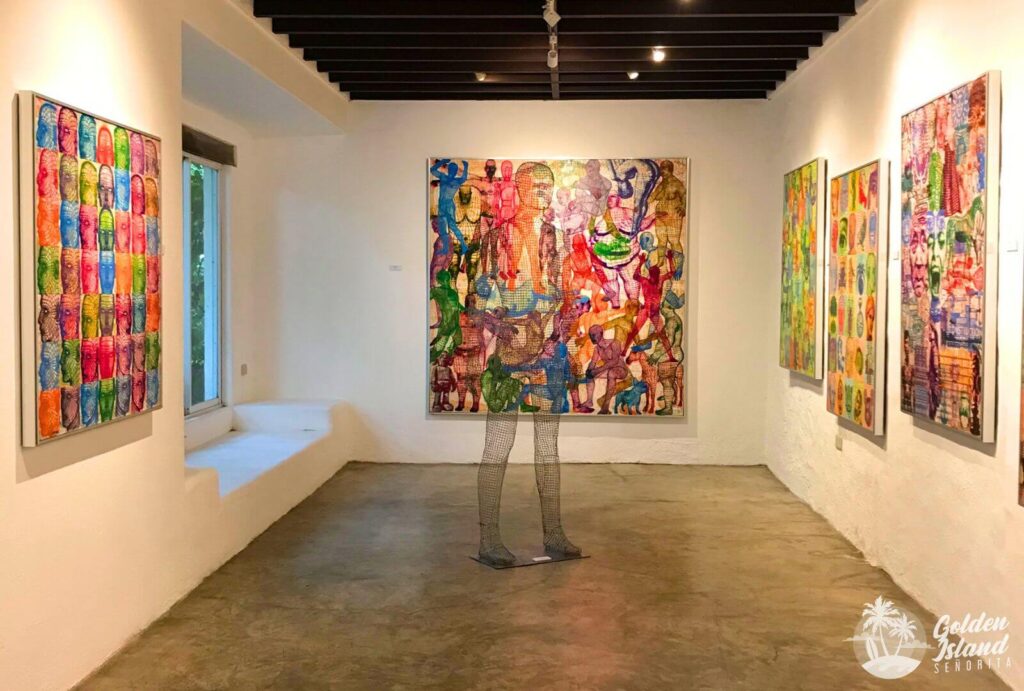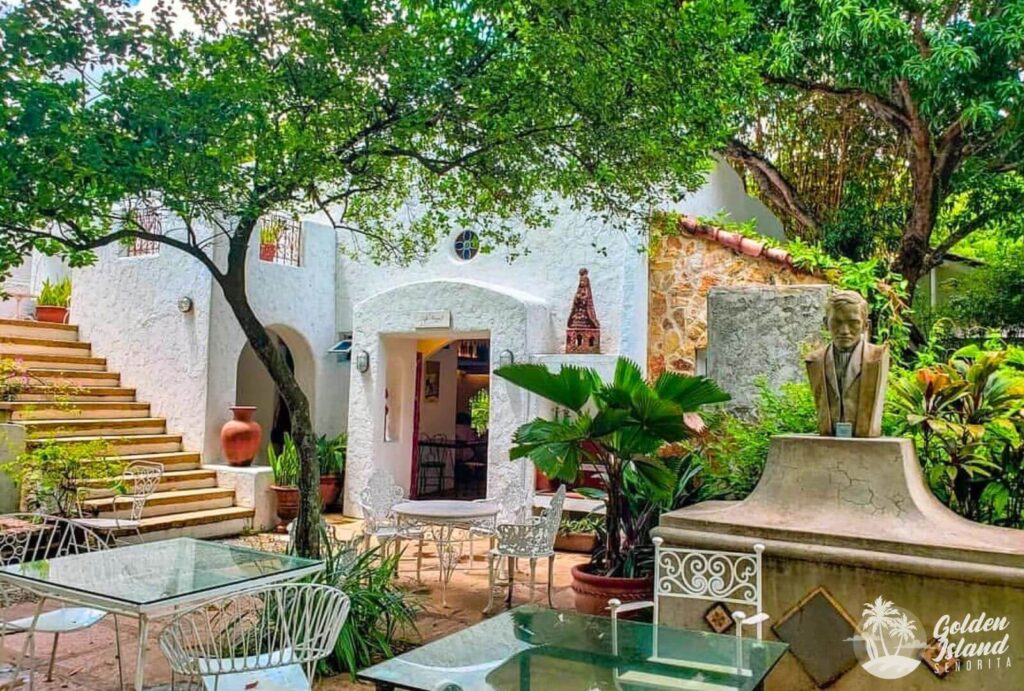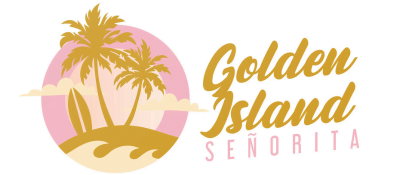Nestled in the serene hills of Antipolo, a city just a short drive away from the bustling metropolis of Manila, lies a haven for art lovers and culture enthusiasts. Pinto Art Museum, often referred to as the “oasis of art,” is a captivating destination that offers a unique blend of contemporary art, lush landscapes, and a deep connection to Filipino culture and history. In this travel guide, we will delve into the rich tapestry of Pinto Art Museum, exploring its history, significance, the art it houses, and the experience it provides to its visitors.


The History and Inspiration Behind Pinto Art Museum
Origins of Pinto Art Museum
Pinto Art Museum was founded in 2010 by Dr. Joven Cuanang, a renowned neurologist and art collector. The word “Pinto” itself means “door” in Filipino, and it is named as such to signify its role as a gateway to the world of art and culture. The museum is a manifestation of Dr. Cuanang’s deep passion for art and his desire to create a space where artists could express themselves freely.
Architectural Beauty and Inspiration
One of the distinctive features of Pinto Art Museum is its architecture. The buildings are designed in a Mediterranean-inspired style, with white-washed walls, arched doorways, and open courtyards that are reminiscent of the picturesque landscapes of Greece or Spain. The design of the museum itself is a work of art, providing a serene backdrop for the artistic treasures it houses. The architecture, along with the lush gardens that surround the museum, provides visitors with a unique and calming environment to appreciate art.

The Art Collection of Pinto Art Museum
Contemporary Filipino Art
Pinto Art Museum is home to a vast collection of contemporary Filipino art, showcasing the creativity and talent of the country’s artists. From paintings and sculptures to installations and mixed-media art, the museum represents a wide spectrum of artistic expressions.
Notable Artists and Their Works
The museum boasts an impressive roster of Filipino artists, both established and emerging. Some of the notable artists whose works are displayed at Pinto Art Museum include Elmer Borlongan, BenCab, Antonio Leaño, and many others. Their creations cover various themes, such as nature, mythology, social issues, and personal reflections, providing a diverse and thought-provoking art experience.
Thematic Galleries
Pinto Art Museum is divided into several galleries, each with a distinct theme. Among the most celebrated galleries are the Silangan Garden, Kubli Springs, and Bencab Gallery. These spaces are curated to immerse visitors in unique and immersive experiences, often reflecting on Philippine history, culture, and contemporary issues.

Cultural and Historical Significance of Pinto Art Museum
Cultural Exploration
Pinto Art Museum serves as a platform to explore and celebrate the rich cultural heritage of the Philippines. The artworks on display often draw inspiration from Filipino traditions, myths, and everyday life, offering a profound connection to the country’s cultural roots.
Historical Perspective
In addition to its cultural significance, Pinto Art Museum has also hosted exhibitions and installations that touch upon historical events and societal issues. It has become a space for artists to voice their opinions on topics such as politics, religion, and environmental concerns, creating a dynamic conversation within the art world.

The Visitor Experience at Pinto Art Museum
Visiting Pinto Art Museum
When visiting Pinto Art Museum, it is advisable to plan your trip in advance. The museum is typically open from Tuesday to Sunday, and it’s best to check their official website for the latest information on opening hours and ticket prices.
Guided Tours and Workshops
For a more immersive experience, you can opt for guided tours and workshops, which are often available at the museum. Knowledgeable guides can provide valuable insights into the artworks and the stories behind them. Workshops, on the other hand, allow visitors to try their hand at various art forms, fostering a deeper appreciation for the creative process.
Exploring the Gardens
Pinto Art Museum’s extensive gardens are an integral part of the experience. Strolling through these lush and well-maintained landscapes can be as rewarding as exploring the art itself. The gardens provide a serene environment for relaxation and reflection, and they are often used for outdoor events and gatherings.
Cafes and Dining
The museum also has its own café, serving a selection of Filipino and international dishes. Visitors can enjoy a leisurely meal or refreshments while taking in the beautiful surroundings. The café’s ambiance is designed to complement the artistic experience, making it a delightful place to savor both food and art.
Shopping for Souvenirs
Pinto Art Museum has a gift shop that offers a range of art-related merchandise and souvenirs. From postcards and prints of the exhibited art to handmade crafts and jewelry, there are plenty of options to choose from, making it a great place to pick up a unique memento of your visit.
Pinto Art Museum and the Local Community
Supporting Local Artists
One of the museum’s primary objectives is to support local artists by providing a space to showcase their talents. Pinto Art Museum has been instrumental in promoting the work of Filipino artists and helping them gain recognition both locally and internationally.
Educational Initiatives
Beyond its role as an art gallery, Pinto Art Museum is also involved in educational initiatives. It hosts workshops, lectures, and outreach programs, aiming to introduce the younger generation to art and culture. These programs help foster an appreciation for the arts and provide opportunities for aspiring artists to develop their skills.
How to Get to Pinto Art Museum
From Metro Manila:
- By Public Transportation:
- Take the LRT-2 to Santolan Station.
- From Santolan Station, ride a UV Express or a jeepney going to Antipolo.
- Alight at Ynares Center.
- From Ynares Center, you can take a tricycle to the Pinto Art Museum. The museum is a popular destination in Antipolo, so most locals would be familiar with its location.
- By Car:
- If driving, take Marcos Highway and head towards Antipolo.
- Upon reaching Antipolo, watch out for signs leading to Pinto Art Museum. It’s located in Grand Heights Rd, Brgy. San Roque.
Fare Price:
- LRT-2 fare will vary based on your location, but the standard fare is around PHP 15 to PHP 30.
- UV Express or jeepney fare from Santolan Station to Antipolo will cost approximately PHP 50 to PHP 70.
- Tricycle fare from Ynares Center to Pinto Art Museum can range from PHP 50 to PHP 100, depending on the negotiation and the number of passengers.
Nearby Landmark:
- The Ynares Center in Antipolo is a well-known landmark near the museum. When asking for directions, many locals will be familiar with both the Ynares Center and Pinto Art Museum, which can help guide you to the museum’s location.
Please note that fare prices may vary and the information is subject to change. It’s advisable to check for the most recent rates and confirm the directions before your trip.


Admission Fee & Other Expenses
250 PHP – Adult (18 years old & above)
200 PHP – PWD & Senior Citizens
125 PHP – Student with proof of enrollment
Free – 3 years old & below
Operating Hours: 10:00 AM to 6:00 PM (Tuesday – Sunday)
Other Reminders: Walk-in only, no pets allowed
Tips for Your Visit to Pinto Art Museum
Check Operating Hours
Before planning your visit, it’s essential to check the museum’s official website or contact them for the latest information regarding opening hours and any special events or exhibitions.
Wear Comfortable Shoes
Given the expansive grounds of the museum, it’s advisable to wear comfortable shoes suitable for walking. You’ll want to explore the beautiful gardens as well as the indoor galleries.
Respect the Art and the Environment
While enjoying the art and the gardens, it’s crucial to respect the museum’s rules and guidelines. Touching the artwork is generally not allowed, and it’s important to dispose of trash properly to maintain the cleanliness and beauty of the surroundings.
Photography Guidelines
Pinto Art Museum generally allows photography for personal use, but be sure to respect the wishes of the artists and the museum. Some exhibits may have restrictions on photography, so it’s wise to inquire about these guidelines during your visit.
Nearby Attractions and Accommodations
Explore Antipolo
Antipolo, where Pinto Art Museum is located, is not only known for its artistic gems but also for its other attractions. Some notable places to visit in the area include the Hinulugang Taktak National Park, the Antipolo Cathedral, and several viewpoints offering breathtaking vistas of the city.
Accommodations in Antipolo
If you plan to stay overnight, Antipolo offers a variety of accommodation options, ranging from budget-friendly inns to boutique hotels and resorts. Some of the well-known hotels in the vicinity include Loreland Farm Resort, Altaroca Mountain Resort, and Eugenio Lopez Center.
Conclusion: Pinto Art Museum – A Journey into Creativity and Culture
Pinto Art Museum is not just a gallery; it’s an immersive experience that delves into the heart of Filipino art and culture. It’s a place where visitors can not only admire art but also connect with the stories and messages conveyed by the artists. The museum’s commitment to supporting local talent, its educational initiatives, and its serene, Mediterranean-inspired surroundings make it a must-visit destination for art enthusiasts and anyone seeking a deeper understanding of the Philippines’ creative spirit.
So, whether you’re a traveler looking for a unique cultural experience, an art lover, or simply someone who appreciates the beauty of nature and architecture, Pinto Art Museum offers a captivating journey into the world of creativity and culture. Don’t miss the opportunity to explore this hidden gem in Antipolo, Philippines, and be inspired by the rich tapestry of art and history that it unveils.


